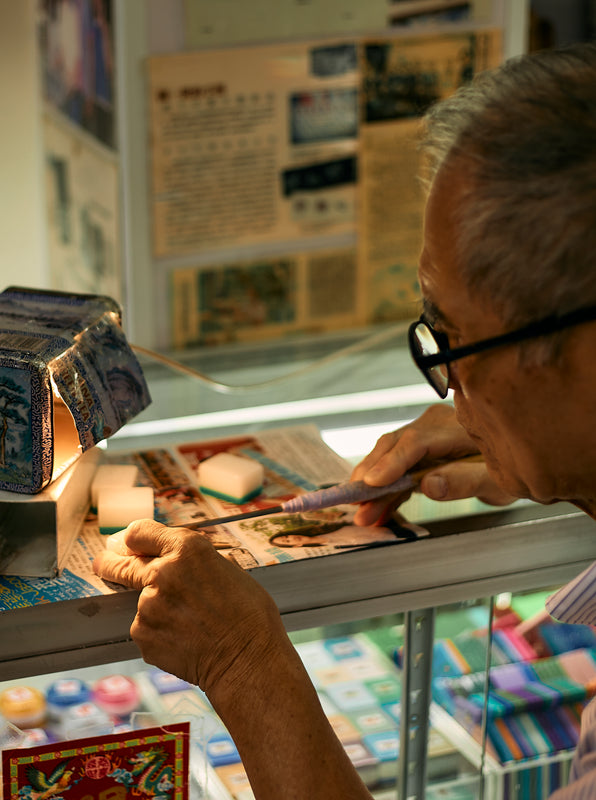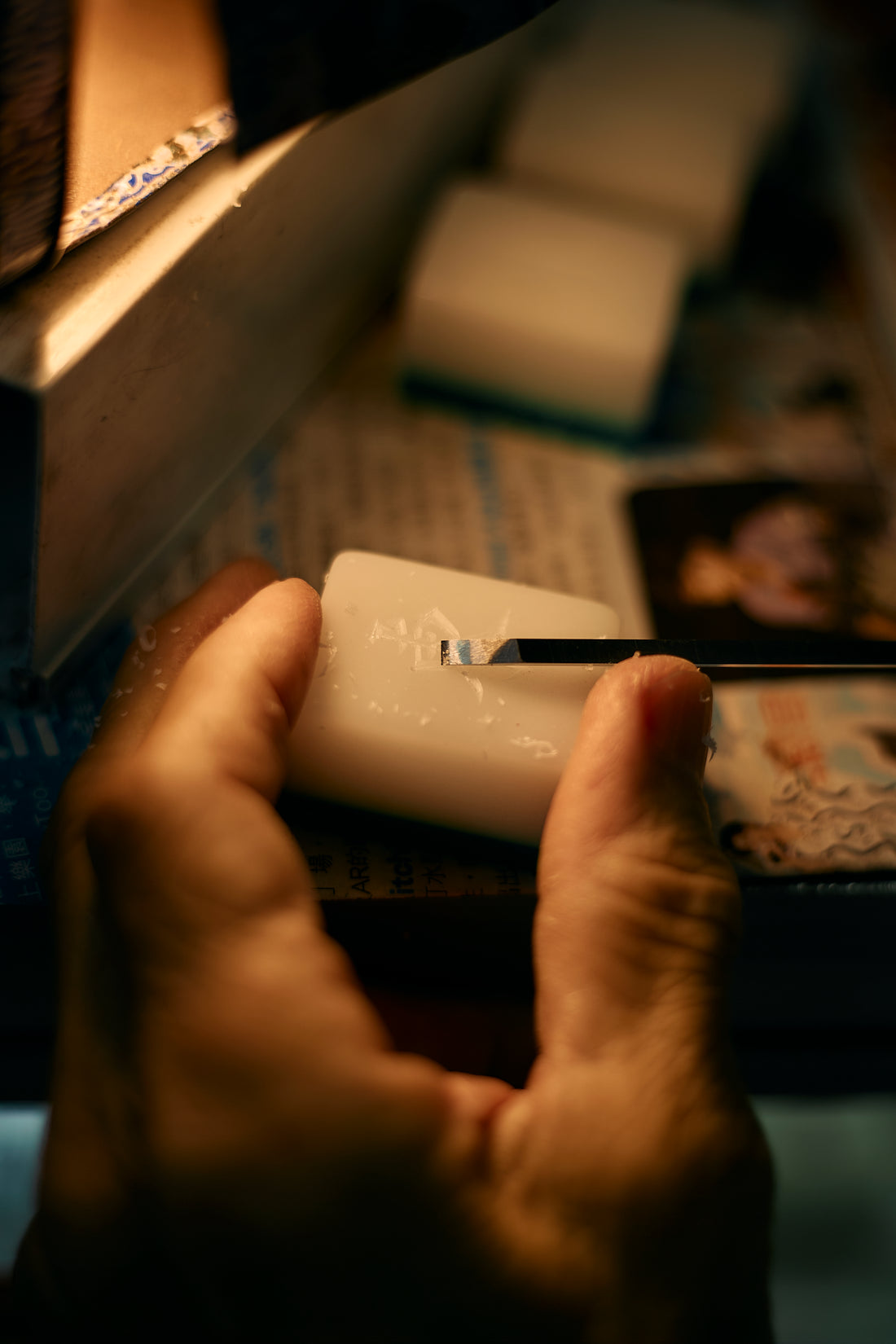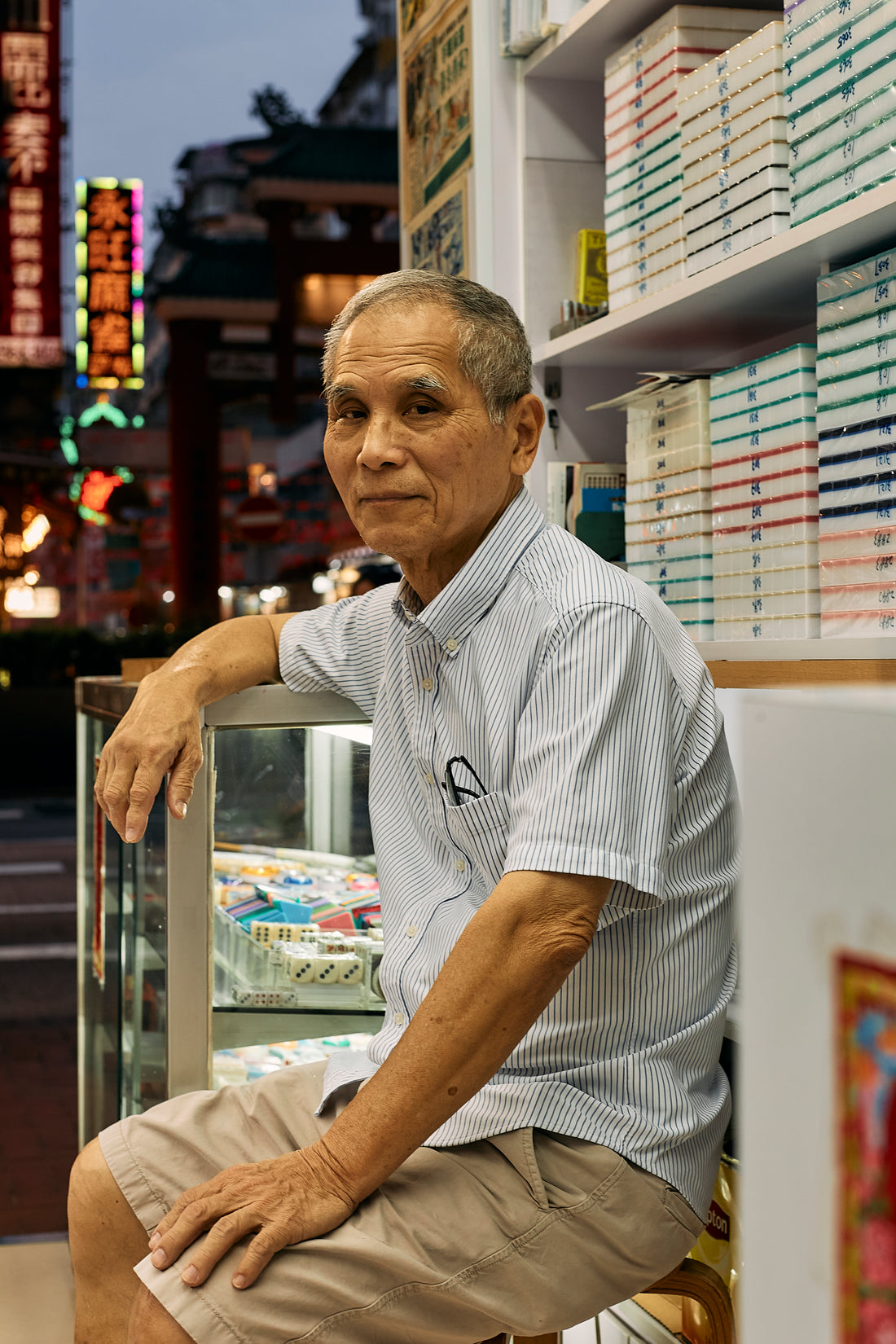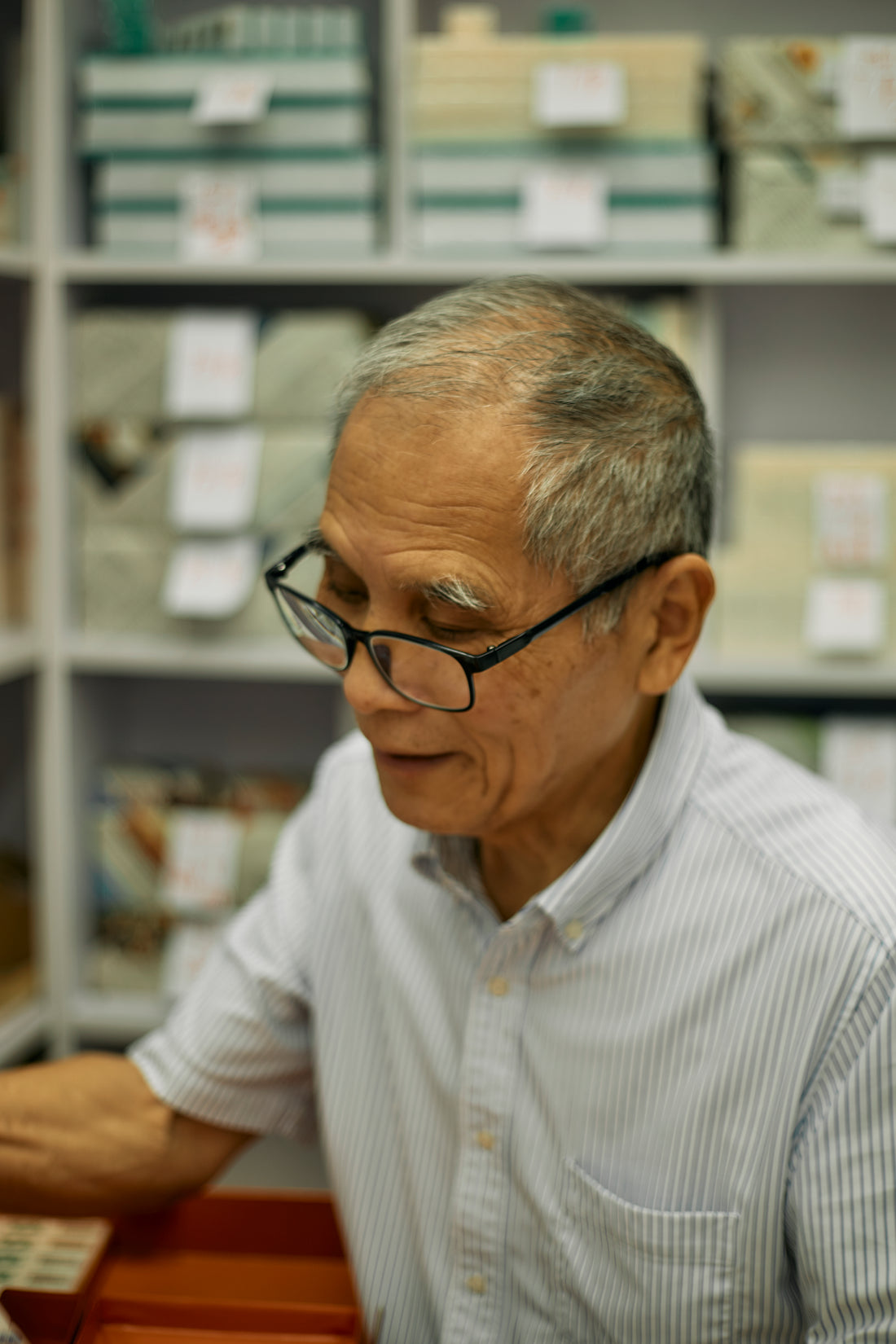-
Mahjong, a cherished tradition in Hong Kong, has a rich heritage of hand-carved tiles crafted by skilled artisans, with Biu Kee Mahjong being a notable shop that continues to preserve this cultural legacy through its unwavering commitment to craftsmanship.
-
Mahjong, a game deeply ingrained in the cultural fabric of Hong Kong, holds a rich heritage that extends beyond its mere gameplay. The artistry of hand-carved mahjong tiles, crafted from atom rubber plastic boards, embodies the essence of this cherished tradition. From the bustling streets of Wellington Street in Central to the vibrant enclaves of Yau Ma Tei and Canton Road, carving masters once congregated, honing their skills and creating exquisite mahjong sets. Each master painstakingly carved one to two sets of mahjong tiles a day, utilizing a meticulous process that involved cutting, polishing, carving, and coloring. Apprentices embarked on a journey of learning, starting with simple patterns and gradually advancing to intricate designs. It took months of practice to master the delicate techniques of stroke placement, corner turning, and the perfect application of force. However, the advent of technology in the 1980s brought forth mechanization, leading to the decline of hand-carved mahjong tiles. Yet, in 2014, these works of art were officially recognized as Hong Kong's intangible cultural heritage, a testament to their enduring significance. Today, a handful of dedicated craftsmen, like Master Cheung of Biu Kee Mahjong (標記麻雀), continue to preserve this heritage, crafting each mahjong tile with unwavering skill and passion. Their commitment ensures that the legacy of hand-carved mahjong remains alive, passing down from generation to generation, a testament to the rich cultural tapestry of Hong Kong.
Biu Kee Mahjong (標記麻雀) holds a special significance in its name, paying homage to Master Cheung’s father, who is now the third-generation proprietor of the establishment. With a rich history spanning almost six decades, this beloved shop has become an iconic presence on Guangdong Road.
This year, it made a significant move across the street from the Temple Street Archway, marking a new chapter in its legacy. Despite the passage of time, Biu Kee Mahjong (標 記麻雀) continues to captivate both locals and visitors alike with its humble yet striking presence, illuminated by bright white lights that distinguish it from neighboring establishments.
While the craft of mahjong tile making has seen a decline in skilled craftsmen over the years, Master Cheung remains a rare talent within the industry. We had the privilege of visiting Biu Kee Mahjong (標記麻雀) and witnessing the meticulous process of crafting mahjong tiles under his expert guidance.
Master Cheung is seated in front of his glass cabinet, meticulously preparing his tools and organizing the smooth white rectangular plastic cards on a wooden tray. Each style of mahjong requires a specific carving knife, some of which Master Cheung has personally crafted. The process demands utmost concentration, as even a minor error can disrupt the pattern or result in an accidental cut.
Using an electric saw, Master Cheung cuts a plastic material to form the mahjong tiles. While traditional tiles were made from wood, ivory, or bamboo, plastic is now the material of choice. He then applies colophony to bond the bottom surface and carefully polishes the corners. Placing the mahjong tile on a lightbox, he employs a heat-conductive metal plate to soften the carving surface. Master Cheung showcases his artistic touch by expertly carving the character “東,” a text pattern that reflects his unique style. Each master of this craft develops their own distinct font, allowing their individual flair to be recognized.
-
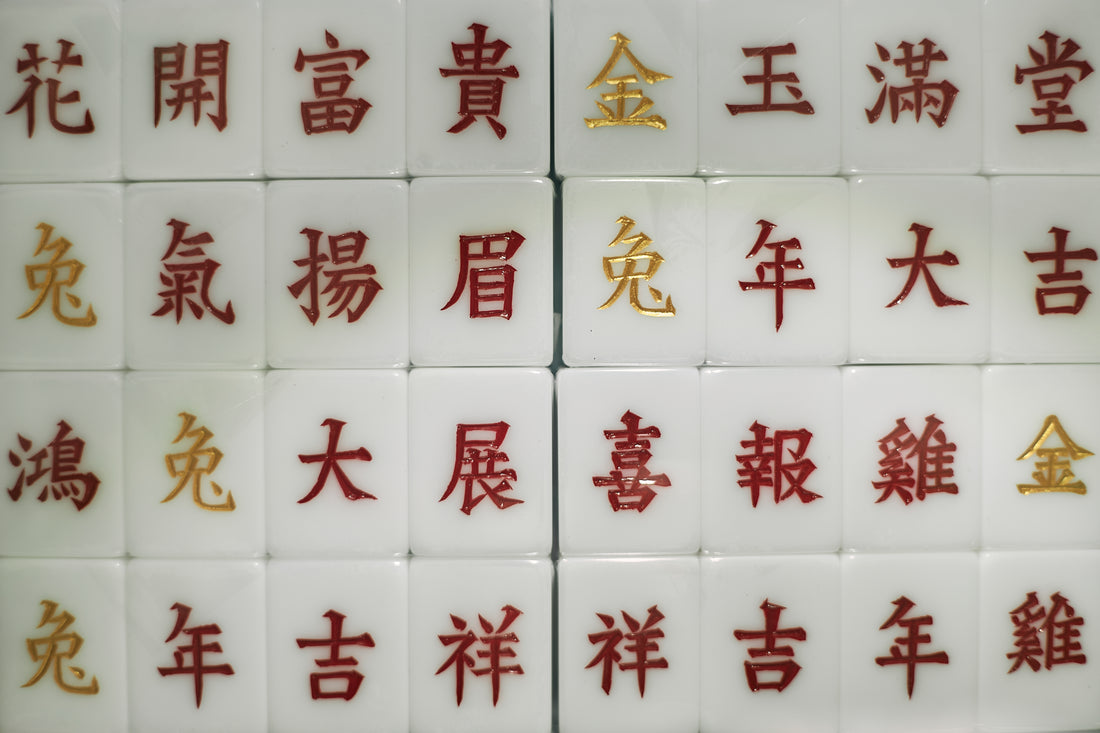
-
For patterns like the circular pattern “Tong Zi” (筒子), a “Zuan Jia” (鑽架) and “Yuan Gui” (圓規) are used for carving. The central axis of the horizontal axis has cloth straps tied to its ends, which must be kept at a 90-degree angle during use. As the master swings the horizontal axis up and down, the central axis rotates left and right, causing the cloth straps on both ends to move. The blade on the central axis then carves out a regular circle. After the basic shape of the “Suo Zi” (索 子) is completed, concentric circles are carved out using the “Yuan Gui” (圓規).
The colors of mahjong tiles primarily consist of red, blue, and green. After carving the character, Master Cheung applies a layer of talcum powder to remove any excess color beyond the boundaries. He dips a brush in “Tian Na Water” (天拿水) to soften it, and then gently applies paint to the carved mahjong tile. Only one color is applied at a time, and once it dries, another color is added. Finally, a scraper is employed to eliminate any excess paint from the surface of the mahjong tiles.
His unwavering dedication to his craft is unparalleled, spending long hours at the shop from noon until midnight, and sometimes even working into the early hours of the morning. This commitment not only allows him to overcome business challenges but also ensures the preservation of the art of mahjong tile making for future generations.
More from the Journal
View All-

Field Notes
Gage Street Neighbourhood Guide
Between Hong Kong’s Central and SoHo district is Gage Street, a hillside enclave that bridges new and old artisans, designers, and restaurateurs.
-
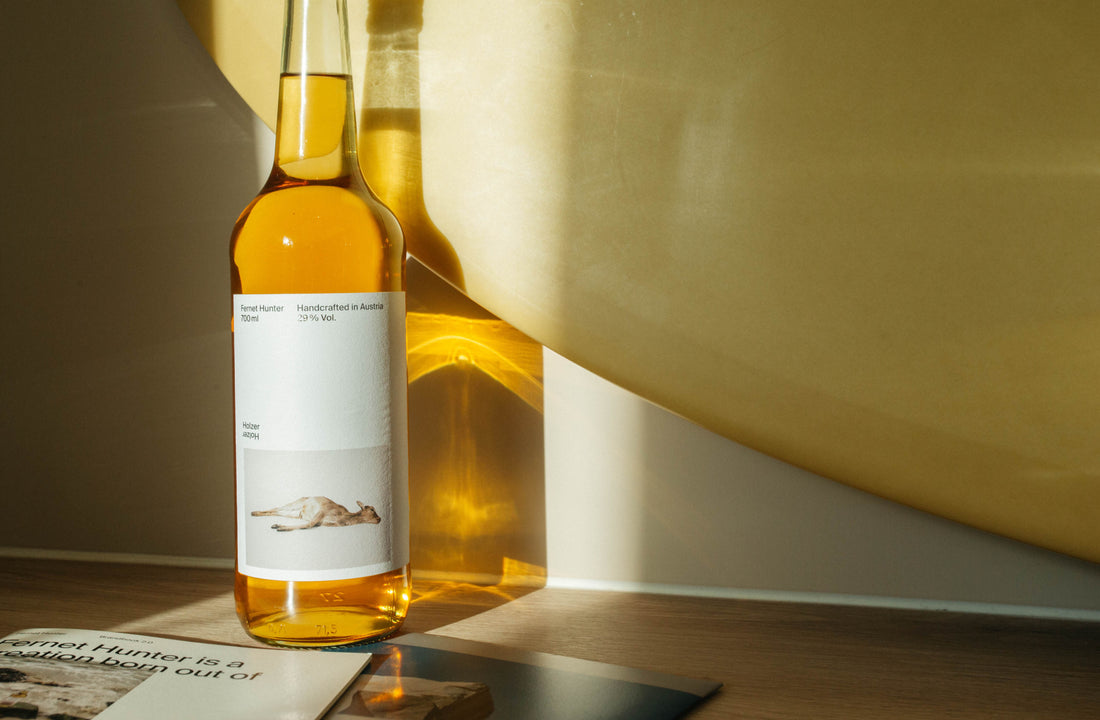
Conversations
From Brunnwald Forest to Hong Kong and back: Conversations with Raphael Holzer
We sat down with Raphael to talk about family legacy, building his business, and tackling the unknown.
-

Conversations
Behind the Seams: The Adventures of Alan See
We sit with Alan See, the co-founder of menswear brand and boutique, The Armoury to talk about good suits, good tailoring, and the adventures he’s had along the way that make great tales.


